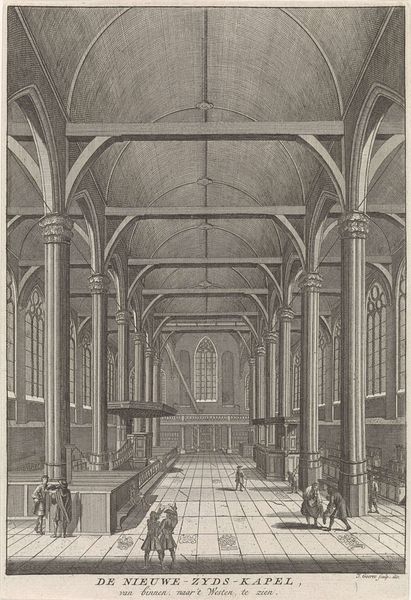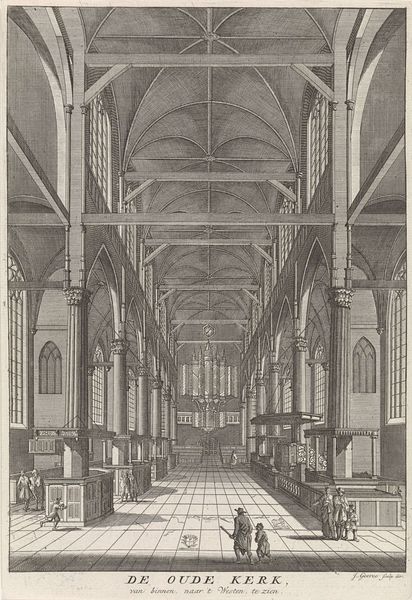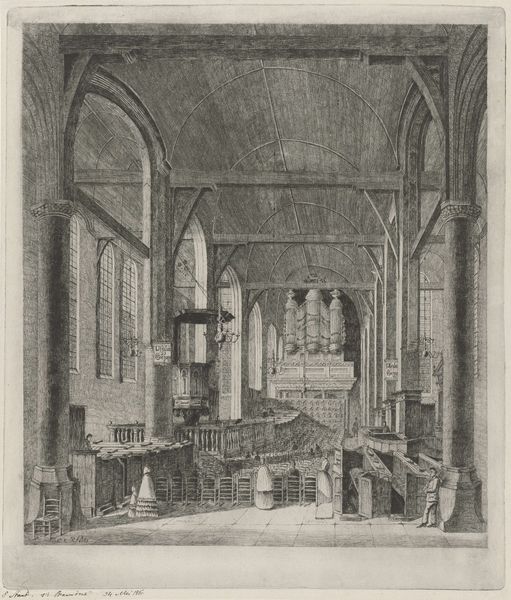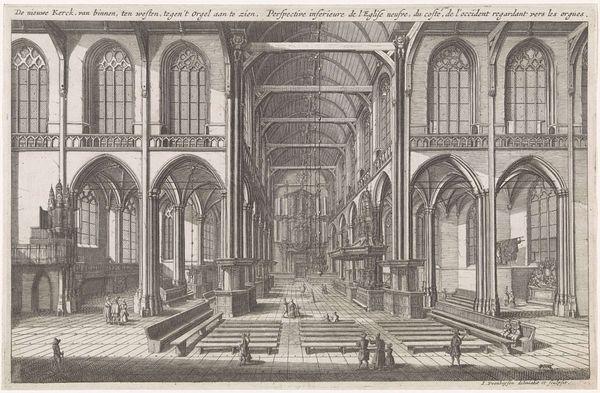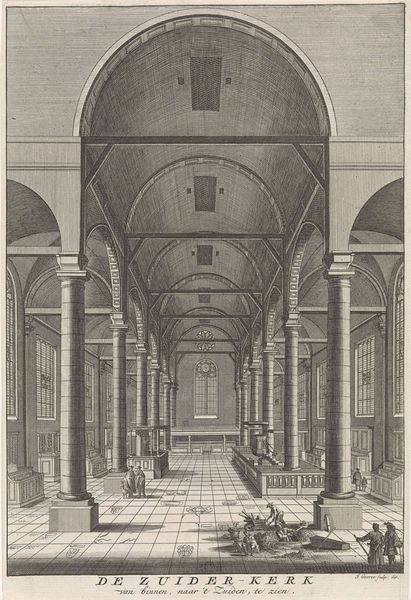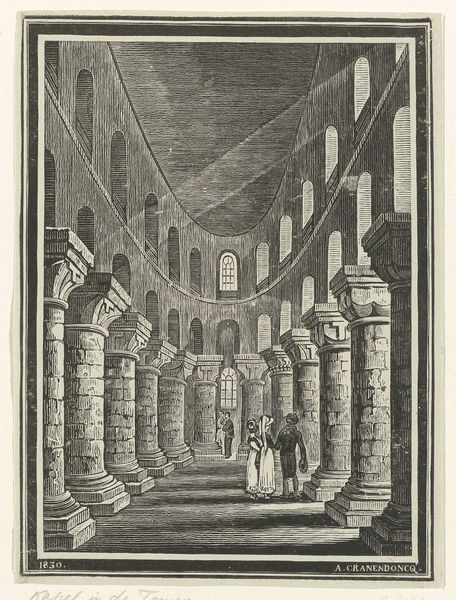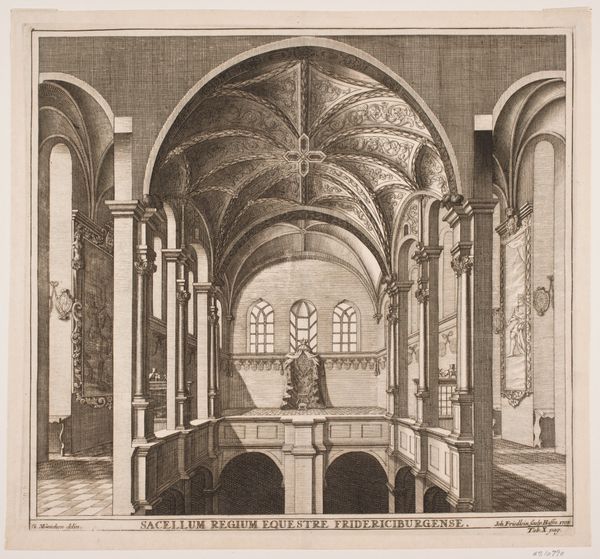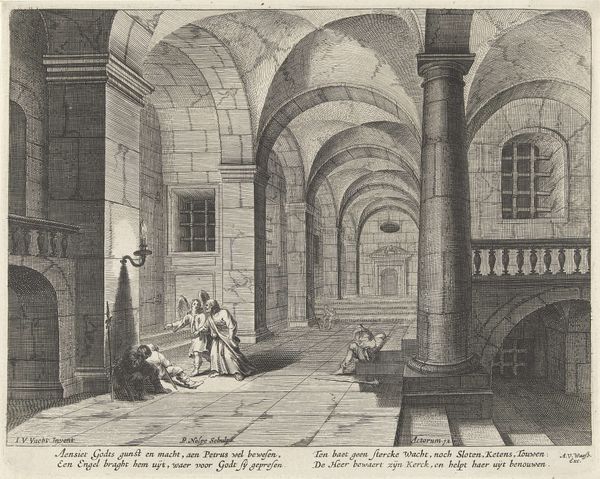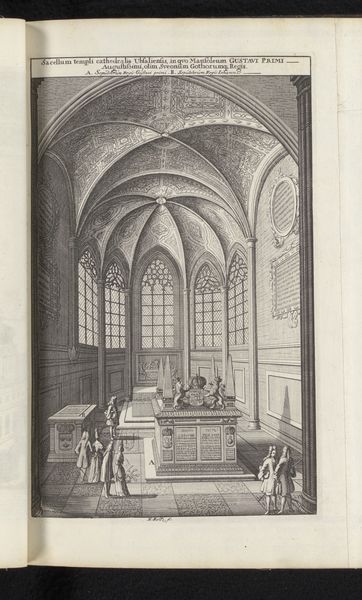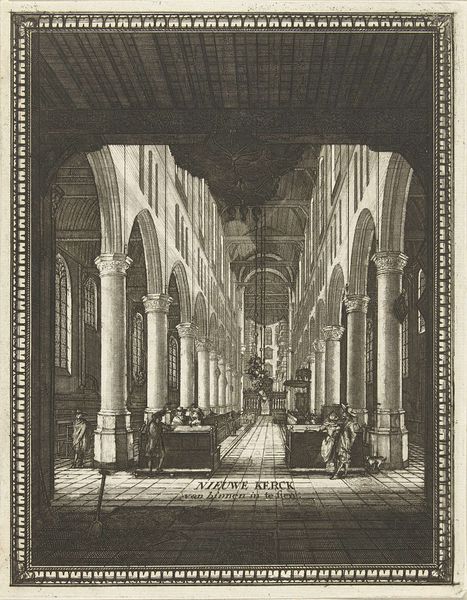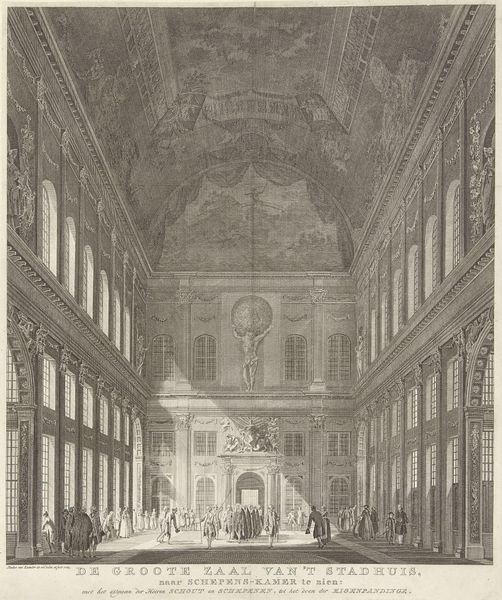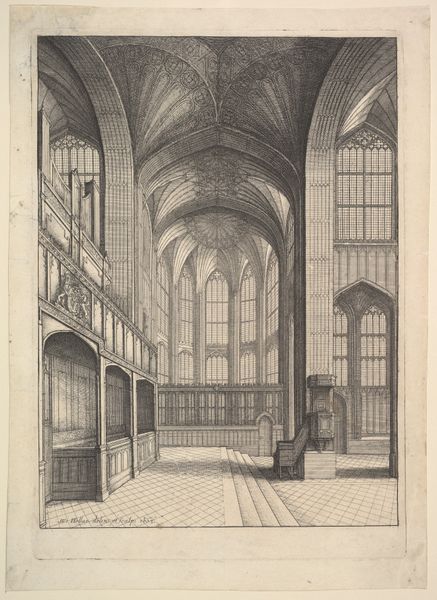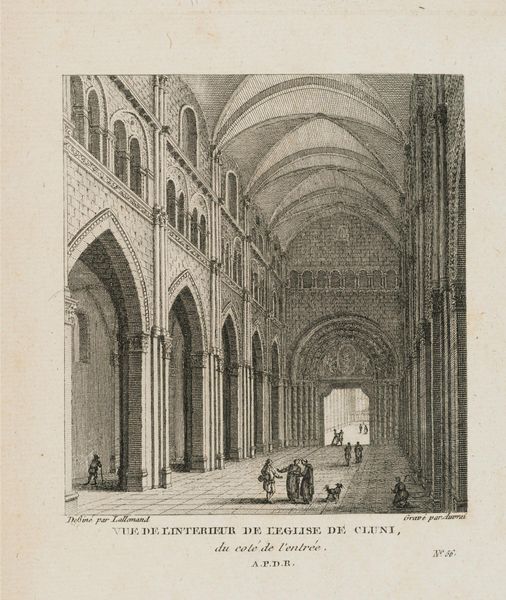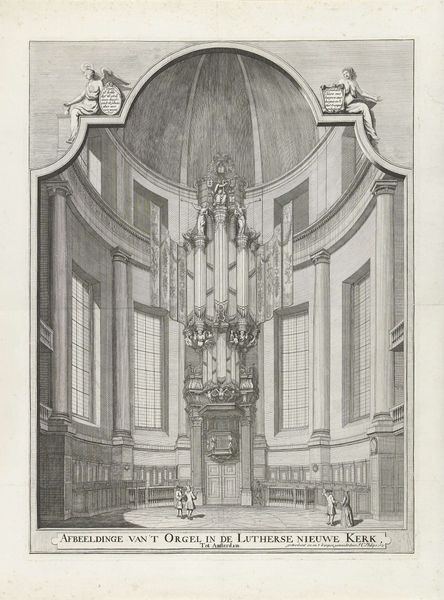
print, engraving, architecture
#
architectural sketch
#
baroque
# print
#
pencil sketch
#
old engraving style
#
perspective
#
cityscape
#
engraving
#
architecture
Dimensions: height 440 mm, width 310 mm
Copyright: Rijks Museum: Open Domain
Editor: This is “Interieur van de Deense Kerk te Londen” or "Interior of the Danish Church in London," an engraving from 1697 by Johannes Kip. What strikes me immediately is the focus on the physical structure – the perspective lines really draw your eye deep into the space. I’m curious, what do you see in this piece, beyond the architecture itself? Curator: What I find compelling is how this print, an object produced through very specific labor – the engraver’s skilled hand, the printer’s workshop – documents another form of labor, the building of this church and the associated religious and social activities it facilitates. The text beneath the image further highlights this social context, noting the collaboration between Danish and English interests in the church's founding. What can we learn from this interplay between image, text, and the social fabric of 17th-century London? Editor: So you’re focusing on the means of production – how the print itself came into being, and what it represents in terms of the social relationships of the time? It makes me think about the engraver, Kip, as a kind of intermediary. He’s not just passively recording a scene; he's actively shaping our understanding of it. Curator: Precisely. He’s engaged in a process of transforming architectural space into a reproducible object, one that could circulate widely and disseminate particular ideas about community, faith, and national identity. What does this act of making available tell us about its intended audience? Editor: That’s a great point. It suggests that this image wasn't just for admiring the church’s design, but also for promoting its purpose and attracting a congregation. Looking at it that way, even the aesthetic choices – the clean lines, the emphasis on perspective – serve a very specific social function. Curator: Indeed. The very materiality of the engraving, the labor involved in its creation and distribution, all point to a complex web of social and economic relationships that shaped both the physical space of the church and its representation. I found it quite useful reflecting about who funded and built this. Editor: That gives me a completely new appreciation for what might seem like a straightforward architectural rendering. It’s fascinating to consider the print as a material object deeply embedded in its historical context. Thank you for pointing it out.
Comments
No comments
Be the first to comment and join the conversation on the ultimate creative platform.
